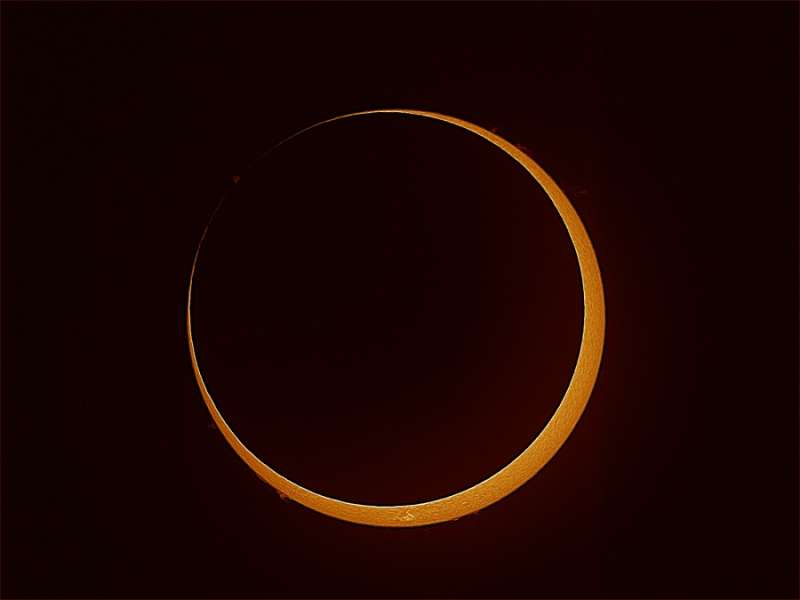 |
Астронет: Астрономическая картинка дня Южное кольцеобразное затмение http://variable-stars.ru/db/msg/1309100/eng |
Credit & Copyright: Cameron McCarty, Matthew Bartow, Michael Johnson -
MWV Observatory, Coca-Cola Space Science Center, Columbus State University Eclipse Team
Explanation:
It's eclipse season, and on
April
29 around 06:00 UT the shadow of the
new Moon will reach out and touch planet Earth,
though only just.
Still, if you're standing
on the continent of
Antarctica within
a few hundred kilometers of
79 degrees 38.7 minutes South latitude
and
131 degrees 15.6 minutes East longitude
you could see an
annular solar eclipse
with the Sun just above the horizon.
Because the Moon will be approaching apogee, the most distant point in the
elliptical lunar orbit, its apparent size will be too small to
completely cover the solar disk.
A rare, off-center eclipse, the annular phase will last at most 49 seconds.
At its maximum it could look something like this "ring of fire" image
from last May's annular solar eclipse,
captured by a webcast team
operating near Coen, Australia.
Otherwise, a partial eclipse with the Moon covering at least some
part of the Sun will be seen
across a much broader region in the southern hemipshere, including
Australia
in the afternoon.
MWV Observatory, Coca-Cola Space Science Center, Columbus State University Eclipse Team
Authors & editors:
Robert Nemiroff
(MTU) &
Jerry Bonnell
(USRA)
NASA Web Site Statements, Warnings,
and Disclaimers
NASA Official: Jay Norris.
Specific
rights apply.
A service of:
LHEA at
NASA /
GSFC
& Michigan Tech. U.
